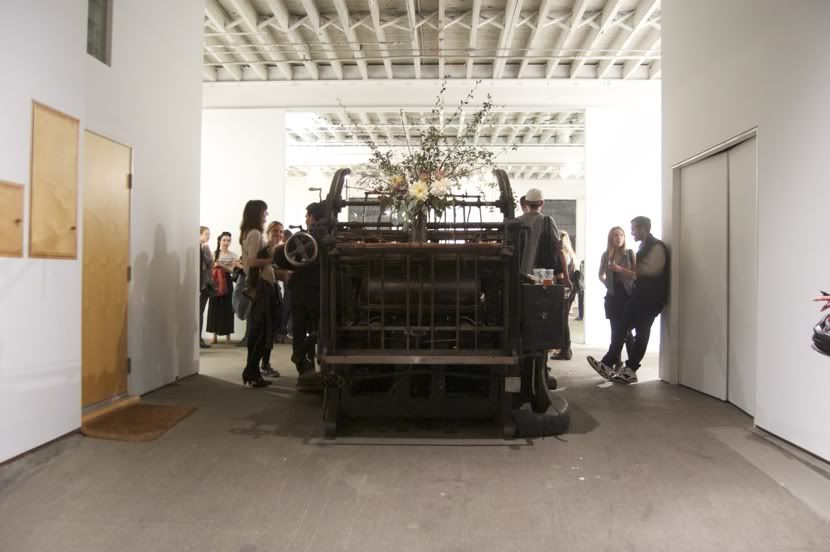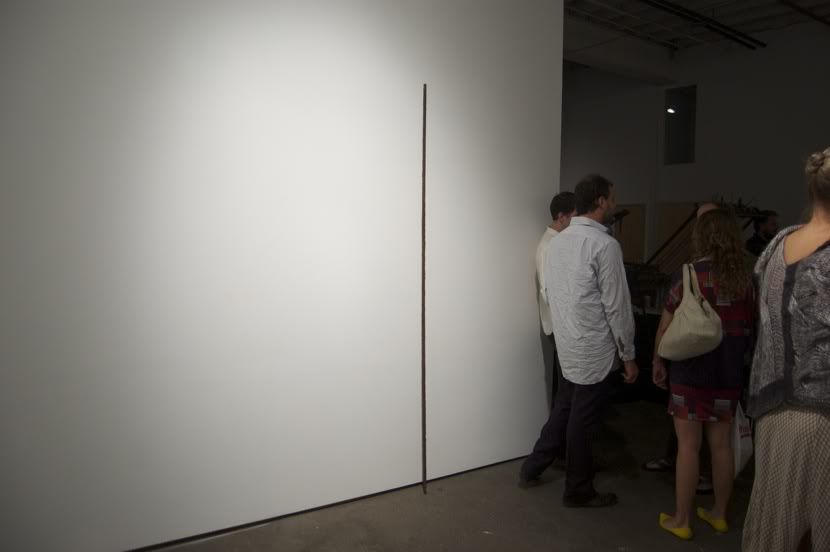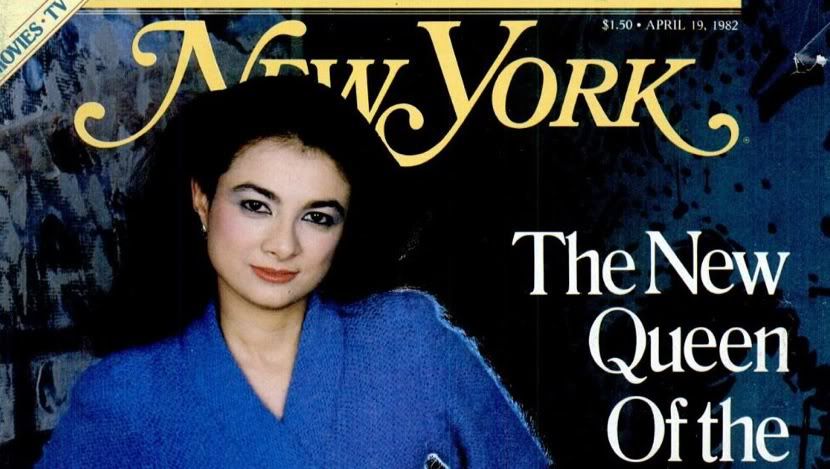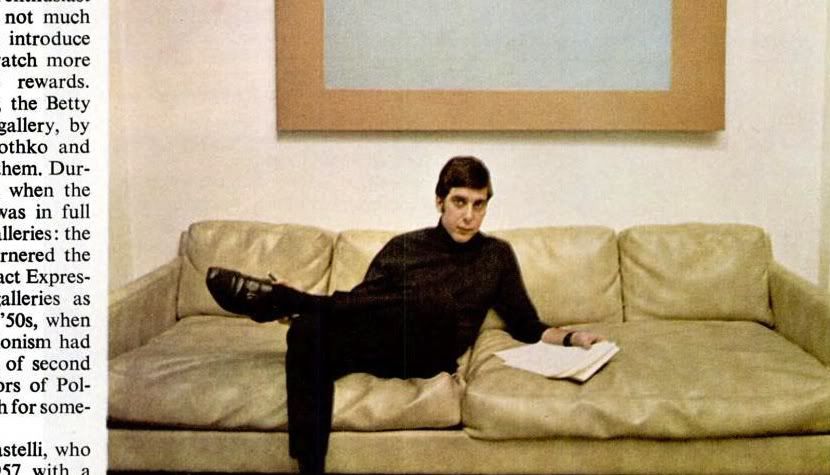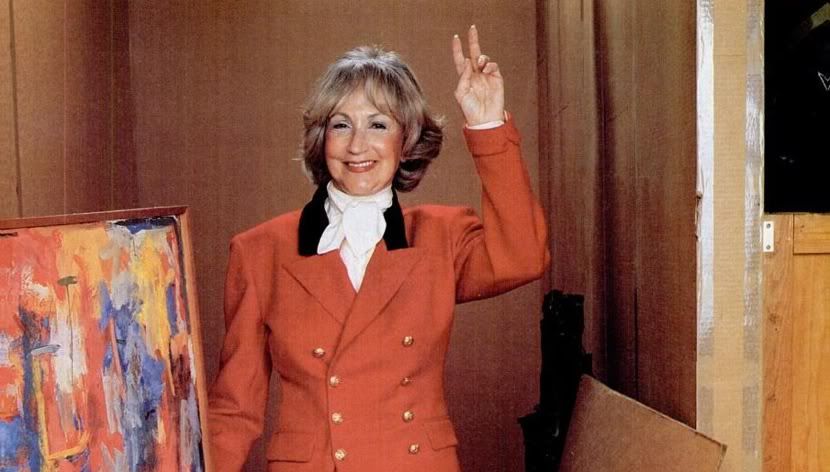Search for ‘Andrew Russeth’ (4 articles found)
'160 km' at Kid Yellin
Installation view of “160 km” at Kid Yellin, Brooklyn, New York, through November 6, 2011.
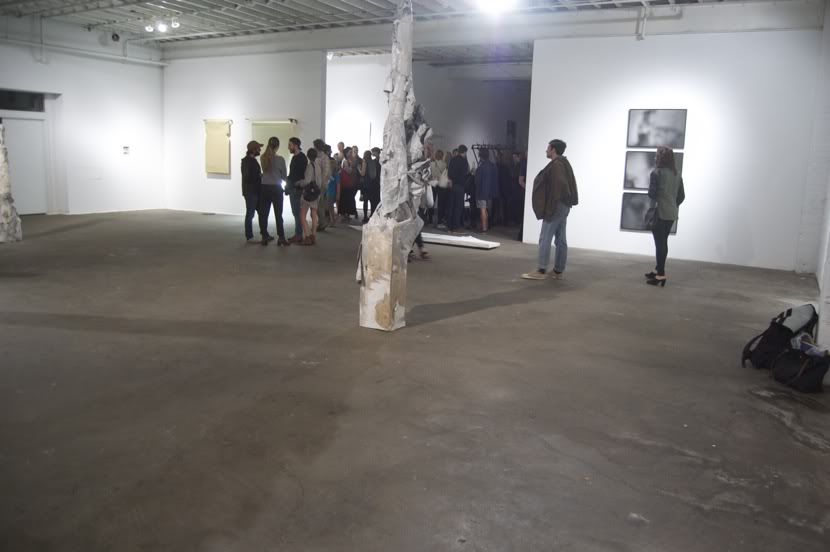 “160 km,” the current show at Kid Yellin in Red Hook, derives its title from the fact that somewhere around 90 percent of Canadian residents are believed to live within 160 km—or about 100 miles—of the border with U.S. This is, at least, what Kayla Guthrie says in a moving essay about drives along the coast of British Columbia. We are dealing, in other words, with slight separations—partial awarenesses across short distances. Also, all ten of the artists are from Canada.A few of them are young and promising, while others were, for me, totally unknown. In the former camp is Elaine Cameron-Weir, who is here (albeit too briefly) with two sculptures, one of which is 100 (steel) (2011), a thin steel rod propped against a wall, covered with brown tobacco that looks like moss. A quiet, crucial grace note in her one-person show at Ramiken Crucible back in May, it looks tough and strong on its own.
“160 km,” the current show at Kid Yellin in Red Hook, derives its title from the fact that somewhere around 90 percent of Canadian residents are believed to live within 160 km—or about 100 miles—of the border with U.S. This is, at least, what Kayla Guthrie says in a moving essay about drives along the coast of British Columbia. We are dealing, in other words, with slight separations—partial awarenesses across short distances. Also, all ten of the artists are from Canada.A few of them are young and promising, while others were, for me, totally unknown. In the former camp is Elaine Cameron-Weir, who is here (albeit too briefly) with two sculptures, one of which is 100 (steel) (2011), a thin steel rod propped against a wall, covered with brown tobacco that looks like moss. A quiet, crucial grace note in her one-person show at Ramiken Crucible back in May, it looks tough and strong on its own.
Elaine Cameron-Weir, 100 (steel), 2011, rolling tobacco, 96 × 5 × 5 in.
Kid Yellin is gigantic, and the show is sparsely populated, so there is room for everything and everyone to breath—even on opening night, October 8. Only a few sculptures—including two wild Rochelle Goldbergs (one nine feet tall), a Cameron-Weir and a Ben Schumacher floor work—are in the gallery's main room. The Schumacher, titled 217 251 (2011), consists of a long white faucet (Glacier Bay brand, the checklist says) wrapped with translucent micro-mesh that the artist printed with a light-blue metallic streak.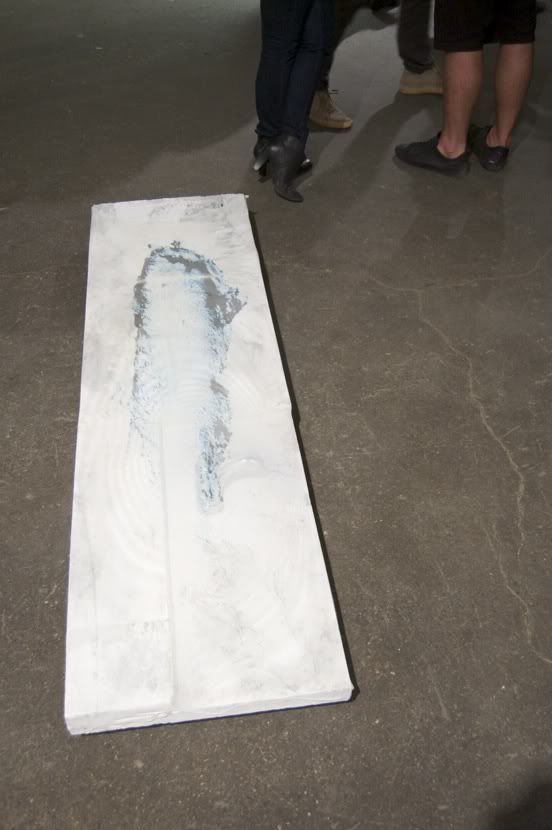
Ben Schumacher, 217 251 Chrome, 2011, inkjet print on micro-mesh, plaster, Glacier Bay bath faucet, steel, staples, inkjet print on paper, 24 × 72 × 4 in.
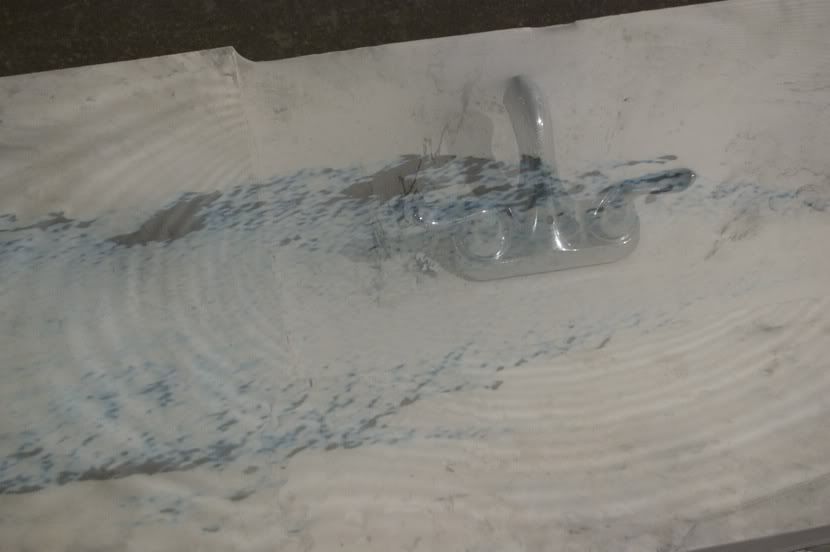
An untitled Lukas Geronimas, in a side gallery, looks uncannily similar to that Schumacher, though Geronimas’s streak is a lustrous gold—gold leaf, as it happens—that he has made to glide across a blue canvas. His work is varied. Two pieces consists of large spools of paper—pale yellow and green—each hanging from a wall-mounted rack like maquettes for Craig Kauffman’s hanging pieces. They are a little beat up, a little worn, and a fluorescent light hangs on the bottom of one, its cord stretching loosely to an outlet on the floor. Another is a simple mahogany grid made of four squares, which is almost imperceptible near the gallery’s entrance.
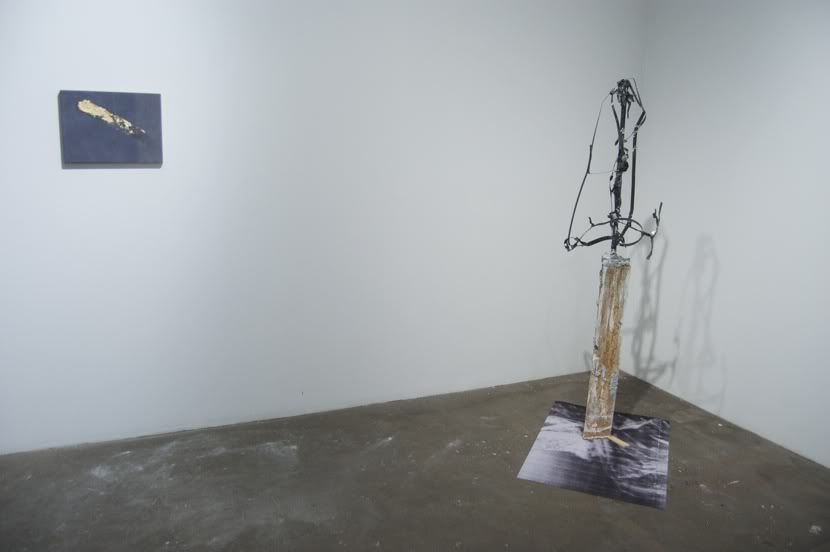
Lukas Geronimas, Untitled, 2011, dyed canvas, gold leaf, dust, metal, waxed string, wood, 12 × 16 in., and Rochelle Goldberg, Flatlander, in space, vertical, 2011, wood, background paper, paint, acrylic polymer, 108 × 21 × 12 in.
Aaron Aujila’s work was a nice surprise: just two tall white pieces hung on a wall that look like slabs of a prefabricated room interior. Austere and honest and a little bit funny; Anne Truitt’s 1961 picket fence, First, made contemporary and cheap. Also on view: works by Dylan Eastgaard, Shawn Kuruneru, Matt Creed, Robin Cameron, and Ryan Foerster.
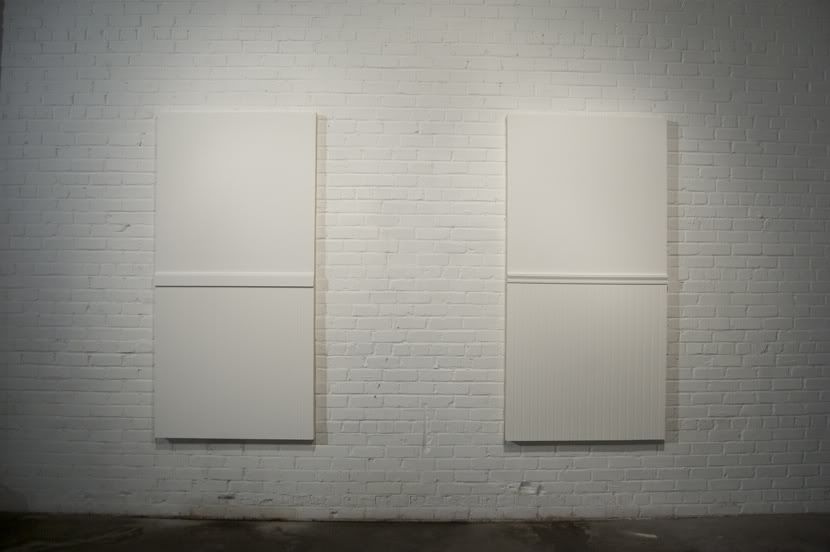
Aaron Aujla, Divine Pleasure, 2011, wood cast polyurethane, joint compound, and acrylic house paint, 80 × 40 in., and Aaron Aujla, Vermont Cream, 2011, wood, cast polyurethane, joint compound, and acrylic house paint, 80 × 40 in.
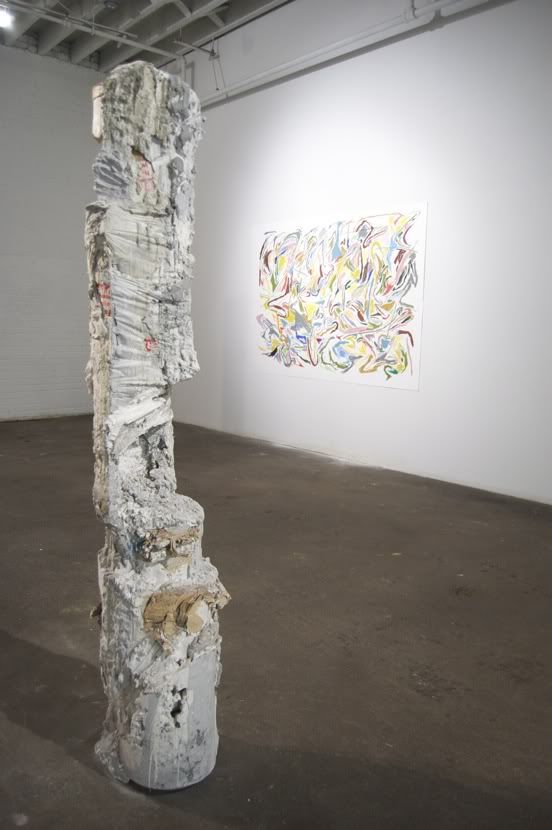
Rochelle Goldberg, Exit Through the Inside, 2011, cardboard, Hydrocal, paper pulp, paint, 72 × 12 × 12, and Robin Cameron, Dancing while drawing, 2011, oil stick and oil pastel on paper, 60 × 88 in.

Lukas Geronimas, Subtitled, 2011, mahogany, textile, brass, tacks, string, adhesives, metal, 50 × 32 in., and Lukas Geronimas, Subtitled, 2011, mahogany, paper, plastic, brass, string, tacks, fluorescent light with transformer, wiring, 62 × 57 in.
Later, after a burger and beer at Brooklyn Ice House, I ran into an art dealer who was heading to a nearby bar. He was also curious about Aujila’s work, and said that it reminded him of Gordon Matta-Clark’s Bingo (1974), just a bit, the long section of a house that was on view at the second floor of the Museum of Modern Art until last month. I was excited, and pleasantly annoyed, because I had been thinking the same thing a few minutes earlier, and had been really pleased with the idea.
Classic New York Magazine Art-Dealer Profiles
Mary Boone, New York, April 19, 1982. Photo by Larry Williams
Larry Gagosian, in front of a painting by Mark Rothko, New York, September 2, 1991. Photo: James Hamilton
Klaus Kertess and an early Ralph Humphrey, New York, May 20, 1968. Photo: Herb Goro</p<
Arne Glimcher, in front of a painting by Chuck Close, in New York, October 10, 1988. Photo: Louis Psihoyos
Ethell Scull, with Jasper Johns’s Out the Window and Black Target
Food's Fiscal Facts, Marinetti, and the "Art of Eating"
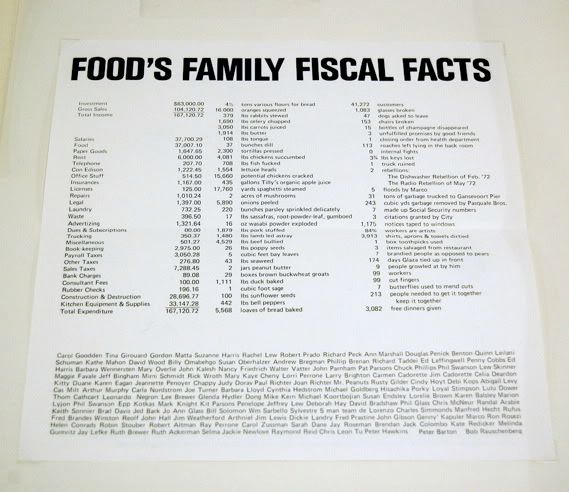
Food’s Fiscal Facts from Avalanche 4, 1972. Shown at “From the Archives: 40 Years / 40 Projects,” at White Columns, New York. Photo: 16 Miles [more]
Gordon Matta-Clark’s Food restaurant ran the advertisement above at the end of 1972, the first year of the restaurant’s operation. Favorite parts: 1,111 lbs of baked duck, 5,568 loaves of bread, 3,082 free dinners given, 1,083 glasses broken. They were paying $6,000 for a year’s worth of rent at the corner of Prince and Wooster in SoHo. (Lucky Jeans has the space today.)
On a related noted, I wrote a piece about art, food, and a few upcoming events in New York that combine the two. Here’s the opening, about Marinetti’s Futurist war on pasta:
“Pasta, however grateful to the palate, is an obsolete food,” Futurist leader Filippo Marinetti declared in 1931. “Its nutritive qualities are deceptive; it induces skepticism, sloth, and pessimism.” Despite generating considerable debate at the time, Marinetti, of course, lost his war against the Italian staple he claimed to despite photographic evidence that suggested his real feelings about the food were a bit more conflicted.
Andy Warhol, Ladies and Gentlemen, at Skarstedt Gallery
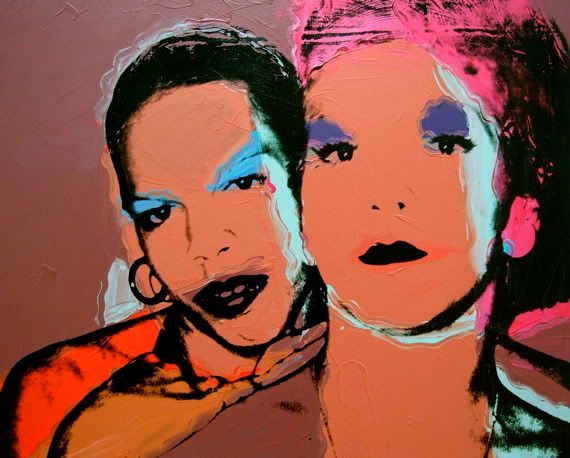
Andy Warhol, Ladies and Gentlemen, 1975. Photos: 16 Miles [more]
Warhol, cross-dressers, and his Polaroid Big Shot camera. His assistant Vincent Fremont: “Bob Colacello found most of them at a club called the Gilded Grape. After the photo session, I would hand the subjects a model release and a check and send them over to the bank.” The paint is super thick on a lot of these, similar to the 1978-79 Shadow paintings at Dia, though Warhol or his assistants seem to be working with a smaller brush here.
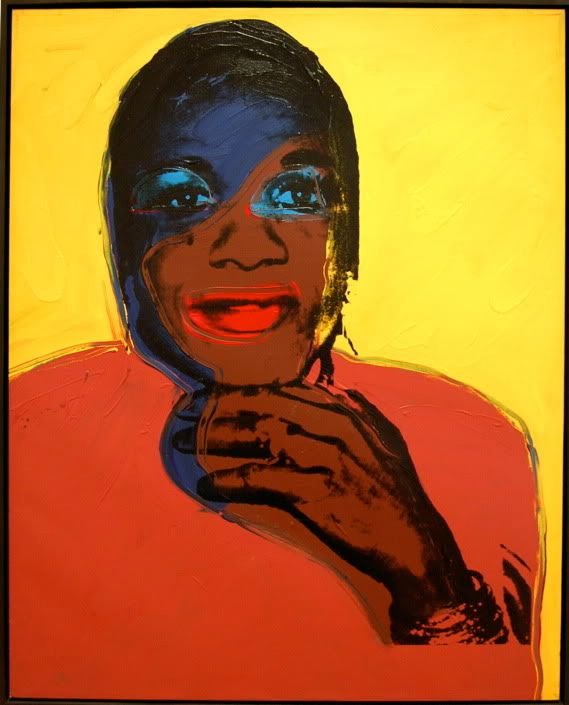

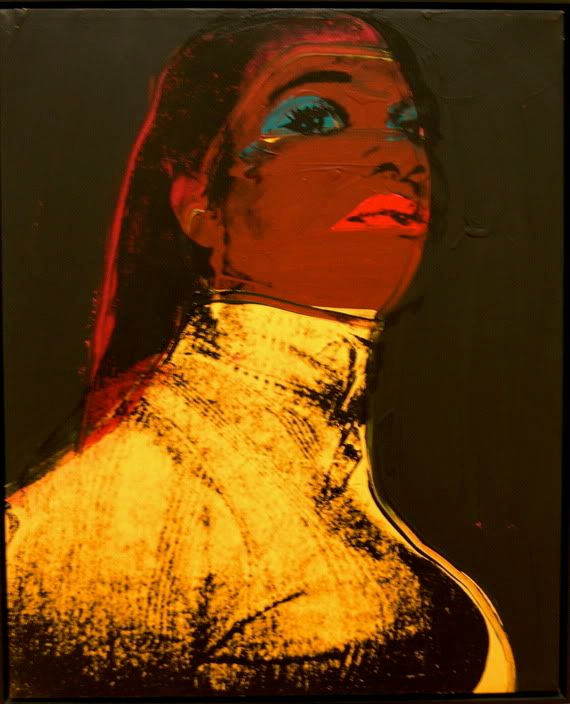
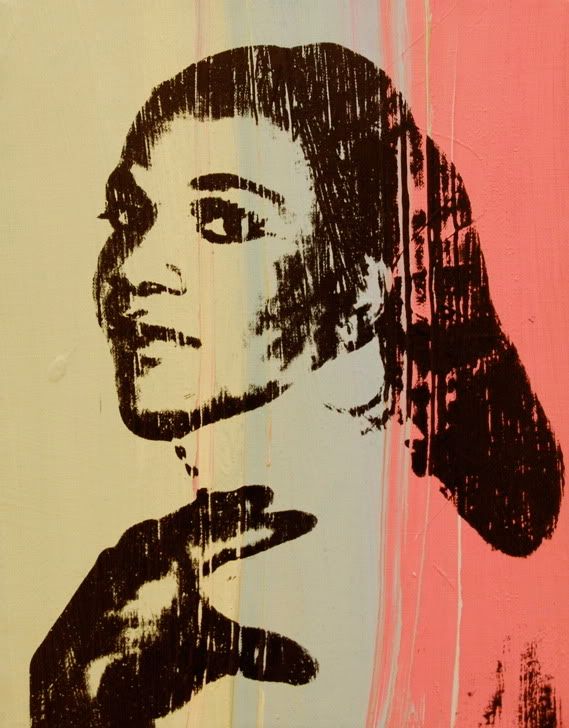

Andy Warhol, “Ladies and Gentlemen”
Skarstedt Gallery
20 East 79th Street
New York, New York
Through October 24, 2009
[more photographs]
